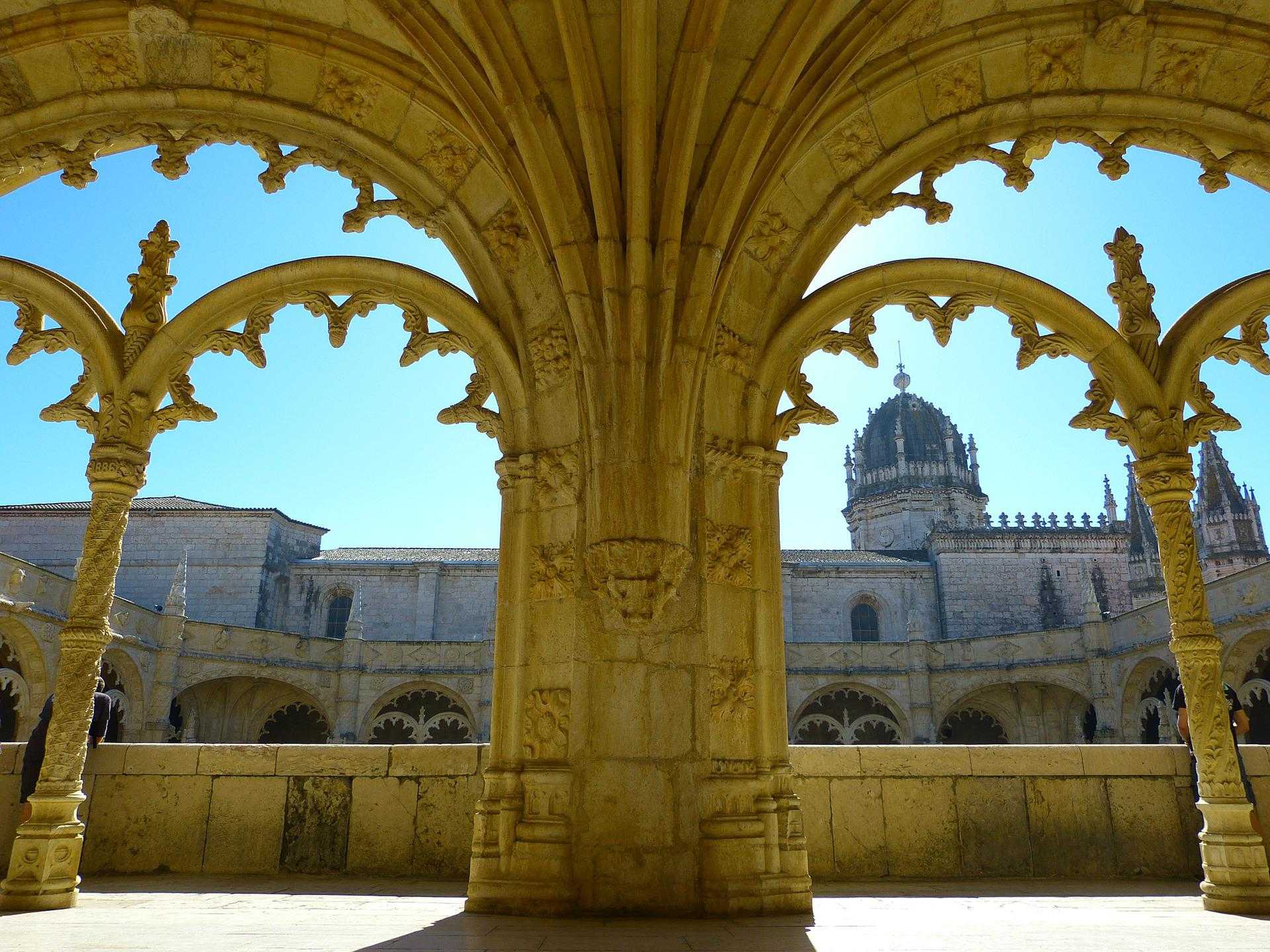The monastery is a striking example of the Manueline style of architecture. Its sheer size and intricacy are symbolic of Portugal's power and wealth during the Age of Discovery.
The Jerónimos Monastery, also known as Hieronymites Monastery, was designed to commemorate the return of Vasco da Gama from India. Its construction began in 1501 but wasn’t completed until the 17th-century. It was symbolically built on the site of the former Ermida do Restelo - the chapel where Vasco da Gama and the rest of his sailors prayed before setting sail to India. The monastery was originally perched right on the banks of the Tagus River, but today the water’s edge is 300 metres south, allowing space for the beautiful Praça do Imperio gardens.
The building is predominantly Manueline style (Portuguese late Gothic) and is one of the most decorative churches in Portugal. Its double-layered cloister is particularly unique, as are the six sculpted columns which hold up the nave.
It is the final resting place for King Manuel I - who ordered its construction - as well as Vasco da Gama and Luís de Camões, Portugal’s most celebrated poet. A lesser-known intricacy is that the recipe for Portugal’s favourite pastry, pastéis de nata, was developed by the monks that once lived here.

- Monday:
- Closed
- Tuesday:
-
10:00 - 17:00
- Wednesday:
-
10:00 - 17:00
- Thursday:
-
10:00 - 17:00
- Friday:
-
10:00 - 17:00
- Saturday:
-
10:00 - 17:00
- Sunday:
-
10:00 - 17:00





